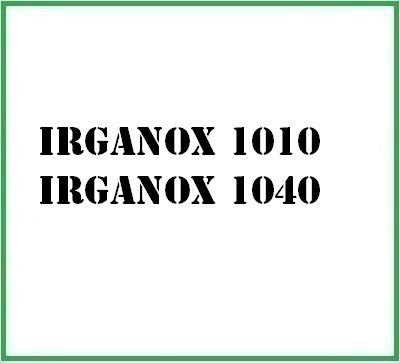Irganox 1010 is a chemical compound, a phenolic antioxidant.
The name describes the structure of the molecule:
Irganox is a trademark for a series of antioxidants produced by BASF.
- "Irganox" dis a combination of the words 'Irgan' and 'ox', suggesting its protective function against oxidation.
- "1010" is a code for that specific antioxidant.
Description of raw materials used in production:
Irganox 1010 is based on pentaerythritol. It's a phenolic antioxidant with the chemical name tetrakis[methylene-3-(3',5'-di-tert-butyl-4'-hydroxyphenyl)propionate]pentaerythritol. The raw materials are pentaerythritol and phenolic derivatives.
The industrial synthesis process takes place in different steps:
- Esterification of 3,5-di-tert-butyl-4-hydroxyphenol - This step involves the reaction of the 3,5-di-tert-butyl-4-hydroxyphenol with an acylating agent like acetic anhydride.
- Reaction with pentaerythritol - The produced ester reacts with pentaerythritol, thus forming Irganox 1010.
What it is for and where
Irganox 1010 is an antioxidant commonly used in the rubber, plastic and polymer industries to protect materials from deterioration caused by oxidation.
It is used in cosmetic facial and body care products as it acts as an antioxidant to prevent the product from degrading when exposed to air and thus oxygen.
This study examined the migration of Irganox 1010 as antioxidant from high density polyethylene and polypropylene (1).

- Molecular Formula C73H108O12
- Linear Formula [HOC6H2[C(CH3)3]2CH2CH2CO2CH2]4C
- Peso molecolare 1177.655 g/mol
- CAS 6683-19-8
- EC number 229-722-6
- DTXSID1027633
- Nikkaji J46.615H
Synonyms:
- Pentaerythritol tetrakis(3-(3,5-di-tert-butyl-4-hydroxyphenyl)propionate)
- 2,2-Bis(((3-(3,5-di-tert-butyl-4-hydroxyphenyl)propanoyl)oxy)methyl)propane-1,3-diyl bis(3-(3,5-di-tert-butyl-4-hydroxyphenyl)propanoate)
- Pentaerythrityl Tetra-Di-T-Butyl Hydroxyhydrocinnamate
- Irganox 1040
- Tetraalkofen BPE
References___________________________________________________________________
(1) Lickly TD, Bell CD, Lehr KM.The migration of Irganox 1010 antioxidant from high-density polyethylene and polypropylene into a series of potential fatty-food simulants. Food Addit Contam. 1990 Nov-Dec;7(6):805-1 doi: 10.1080/02652039009373942.
Abstract. Alternatives to highly-volatile ethanol or analytically complex cooking oil were examined as potential fatty-food simulants which would undergo high-temperature exposures to food-packaging polymers in food-packaging evaluation studies. The alternatives consisted of alcohols containing four to eight carbons. As test cases, the migration of Irganox 1010 antioxidant from high-density polyethylene and polypropylene into the higher alcohols was compared to the migration of Irganox 1010 into aqueous ethanol solutions and cooking oil, the US Food and Drug Administration's currently recommended fatty-food simulants. The data obtained showed slightly greater migration of the antioxidant into 95% ethanol than into cooking oil, and slightly less migration into 50% ethanol than into cooking oil. The migration of the antioxidant into the alcohols consisting of four or more carbons was much greater than the migration observed in cooking oil. In many experiments the polymers became depleted of the antioxidant prior to the end of the short, high-temperature exposure period (i.e. 2 h at 250 degrees F) to the higher alcohols. Also, for all experiments run under the same time/temperature/simulant conditions, migration of the antioxidant was greater from polypropylene than from high-density polyethylene. Diffusion coefficients generated for 95% ethanol and corn oil from these data compare closely with data from the literature.
![]() IRGANOX 1010
IRGANOX 1010 


